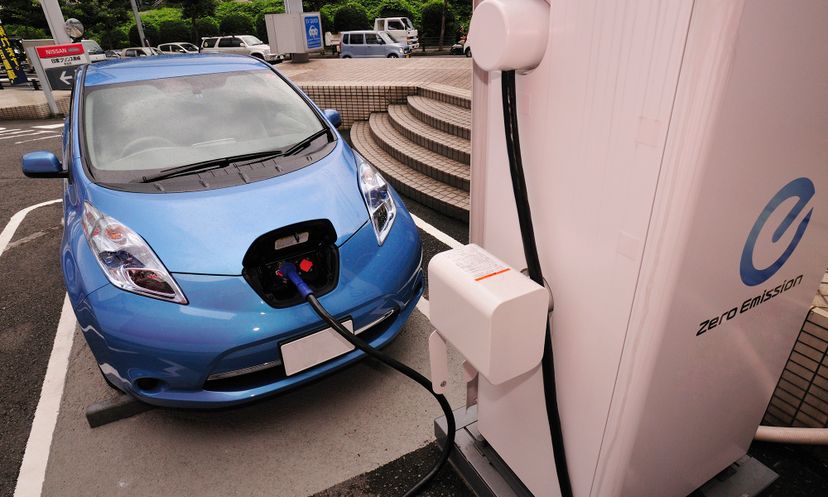
About This Quiz
They may look similar from the outside. But there are many significant under-the-hood differences between an electric-powered car and a car that makes use of an internal combustion engine. How much do you know about electric cars?The accelerator pedal hooks to a pair of potentiometers (variable resistors), and these potentiometers provide the signal that tells the controller how much power it is supposed to deliver. The controller can deliver zero power (when the car is stopped), full power (when the driver floors the accelerator pedal), or any power level in between.
There are two potentiometers for safety's sake. The controller reads both potentiometers and makes sure that their signals are equal. If they're not, then the controller doesn't operate. This arrangement guards against a situation where a potentiometer fails in the full-on position.
The controller reads that setting from the potentiometer and rapidly switches the power to the motor on and off so that it is on half the time and off half the time. Most controllers pulse the power more than 15,000 times per second, in order to keep the pulsation outside the range of human hearing. The pulsed current causes the motor housing to vibrate at that frequency, so by pulsing at more than 15,000 cycles per second, the controller and motor are silent to human ears.
Advertisement
The controller creates three pseudo-sine waves. It does this by taking the DC voltage from the batteries and pulsing it on and off. In an AC controller, there is the additional need to reverse the polarity of the voltage 60 times a second. Therefore, you actually need six sets of transistors in an AC controller, while you need only one set in a DC controller. In the AC controller, for each phase you need one set of transistors to pulse the voltage and another set to reverse the polarity. You replicate that three times for the three phases -- six total sets of transistors.
Electric cars can use AC or DC motors. If the motor is a DC motor, then it may run on anything from 96 to 192 volts. Many of the DC motors used in electric cars come from the electric forklift industry. If it is an AC motor, then it probably is a three-phase AC motor running at 240 volts AC with a 300 volt battery pack.
Right now, the weak link in any electric car is the batteries. There are at least six significant problems with current lead-acid battery technology: They are heavy, they are bulky, they have a limited capacity, they are slow to charge, they have a short life and they are expensive.
Advertisement
To keep the battery charged, an electric car needs a DC-to-DC converter. This converter takes in the DC power from the main battery array (at, for example, 300 volts DC) and converts it down to 12 volts to recharge the accessory battery. When the car is on, the accessories get their power from the DC-to-DC converter. When the car is off, they get their power from the 12-volt battery as in any gasoline-powered vehicle. The DC-to-DC converter is normally a separate box under the hood, but sometimes this box is built into the controller.
Any electric car that uses batteries needs a charging system to recharge the batteries. The charging system has two goals: To pump electricity into the batteries as quickly as the batteries will allow, and to monitor the batteries and avoid damaging them during the charging process.
Because the batteries are in series, they get exactly the same amount of recharge, leaving the weak battery even weaker (relatively) than it was before. Over time, this results in one battery going bad long before the rest of the pack. The weakest-link effect means that this battery determines the range of the vehicle, and the usability of the car drops off. The common solution to the problem is "equalization charge." You gently overcharge the batteries to make sure that the weakest cells are brought up to full charge. The trick is to keep the batteries equalized without damaging the strongest batteries with overcharging.
Advertisement
Usually, the electric motor needs a reduction gear for maximum efficiency. The easiest way to create the gear reduction is to pin the existing manual transmission in first or second gear. It would save weight to create a custom reduction gear, but normally it is too expensive.